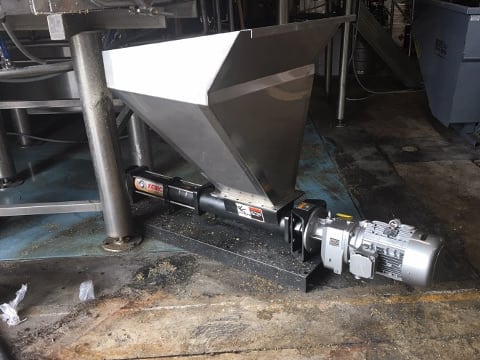Spent Grain Pumps
Spent grain is an extremely difficult material to work with. Traditional conveyance methods become problematic quickly and even many solutions specifically designed for it barely work. But there is a solution.
Spent grain is one of the most difficult-to-work-with substances out there. And with lots of experience in food, beverage, pharma, and chemical industries, that’s saying a lot. It’s heavy, it bridges, it stinks, and if you take too long, it gets stuck. But it’s not impossible. If you have a short, straight shot to your silo, just ask us about screw conveyors.
But if your path is long or winding, there are three manufacturers that are practical.
Ponndorf Pumps
More expensive up-front air-slug up-front, but a little less labor
The Ponndorf is an air pump that uses compressors to generate air “slugs” that push the spent grain through the lines. The benefits are that they are less expensive than other options and can run dry, and their drawbacks are that the curves in the line must be broad and you must maintain moisture consistency to keep things running smoothly. If the grain gets too wet it becomes too heavy, and if it’s too dry air will puncture through the grain. But instead of running dry and damaging the pump, the fix is simply to flush it with more air. Ponndorf requires more fiddling, but you don’t have to replace the stators.
Netzsch Pumps
More expensive progressive cavity
Netzsch progressive cavity pumps were long the industry standard. The problem with them is the rubber stators, which cost about 1/5 the cost of the pump and would burn out when run dry. Brewers tried simply not running them dry, but with how inconsistently spent grain flows (or doesn’t) intermittent dry runs were inevitable, and costs were high. Netzsch tried fitting them with sensors to automatically stop when dry-running was detected, but because the sensors relied on temperature, damage was already done by the time the pump switched off. On the nightmarish end of the spectrum, one of our larger customers were spending over $100k/yr replacing stators.
So if you want to go Netzsch, it’s a little more expensive, then we have to swap the rubber stator for a metal one.
Xeric
Recommended – Less expensive progressive cavity
Simply put, Xeric is the slightly cheaper—albiet similar quality—version on the Netzsch pumps, but they already have the metal stator. It requires less fiddling on the floor, but the metal stators do eventually have to be replaced. Xeric is pretty much the industry-standard nowadays and is the option we will go with unless you prefer something else.
